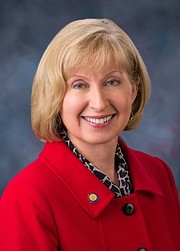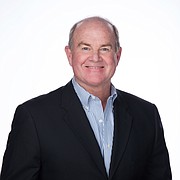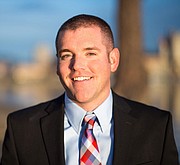Legislators like new funding proposal
COEUR d’ALENE — Kootenai County legislators spoke out in support of a new public school funding formula presented last week.
The proposal was created by the state’s Interim Public School Funding Formula Committee in conjunction with consultants from the Education Commission of the States. Education committee members from both chambers of the state Legislature met Thursday in a rare, joint meeting for the presentation.
The proposal would link state funding for school districts to students.
“Under this model, every district receives a base amount of funding per student. The more students a district educates, the more money the district receives,” according to ECS document.
The new funding formula would also provide districts extra funding for certain categories of students: special education, English language learners, economically disadvantaged, K-3 and high school, and gifted and talented.
The proposal provides funding bumps to small school districts, districts with remote school buildings, districts with more than 20,000 students, and districts that have a difficult time raising local funds.
Rep. Tony Wisniewski sat as a member of the Joint Education Committee to which the new school funding formula was presented. He supports the new funding formula concept.
“In essence, the funding formula is a detailed accounting tool that enables any user to rapidly determine the fiscal consequence of making adjustments to the baseline budget,” Wisniewski said. “This tool will help prevent some of the disadvantages of the current line-item appropriation process that suffers from complex calculations, unrecognized financial interdependencies, and lack of conciseness.”
Sen. Mary Souza said, “The new funding formula will enable greater flexibility and innovation at the local level.”
Rep. Jim Addis called the proposed new funding formula simpler, more transparent, more flexible, more under local control, and more student-centered than the current formula. Addis pointed out that the proposal offers a three-year transition period in which no school district will lose money.
“In addition, the amount of additional funding that any district can receive from one year to the next is capped at 7.5 percent. So all school districts/charter schools will see their annual funding stay stable or increase up to 7.5 percent per year in the first three years of the formula.”
Rep. Paul Amador said, “I am highly supportive of the work of the school funding formula committee. The proposed formula modernizes our approach to school funding and ensures that state dollars follow individual students and their movement within the educational system. The proposed formula also ensures that no school district is financially penalized during the roll-out of the process.”
Despite support for the proposal by legislators, Souza expects the proposal to be tweaked as it moves through the legislative process.
Wisniewski also warned that the proposal alone won’t fix public education.
“The decisions for how much to adjust each spending category must still be made by the legislators in cooperation with the State Department of Education,” he said. “We must remember that the funding formula is a well-written impact analysis tool and not a magic wand.”
To learn more about the funding formula, a short YouTube video made by ECS is available at: http://bit.ly/2RKjWLf
The final committee report is available at: http://bit.ly/2REUIgV







